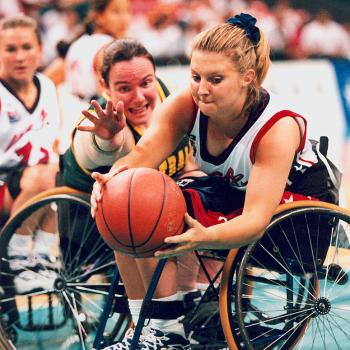In response to a popular piece on the economic devastation of “flattening the curve” my friend Scott Reeves issued a challenge to me: Jen, I think you’re wrong. Check us off on the test of true friendship, and then read Scott’s thoughtful challenge to the Church, which is pertinent to anyone who opposes the flattening of the faith.
Meanwhile, as an Armchair Junior Economist, with the weight such a position entails, here are some quick thoughts on what I think Americans need to do to hold the economy together as well as it can be held.
(1) I stand by the moral imperative to do what we can to avoid overwhelming our medical system by letting contagion spread unfettered. I think the evidence is clear that failure to “flatten the curve” causes a massive number unnecessary deaths.
Perhaps I’ll expand that thought in a future post. But for now, it’s simply a premise of my thinking, rooted in my pro-life point of view. If your opinion is that it’s okay to knowingly allow many people to die who would otherwise survive, in order to achieve some other goal, then I suppose my question is: What goal is it you have which is of greater value than protecting human lives?
(Of course we know that many people in our society do hold, say, economic security to be of greater value than allowing this or that inconvenient person to live. That is wrong.)
I recognize that poverty is itself a cause of death and destruction (more to follow below, though probably not what you want to hear). However, to simply be less rich is not worse than being dead. And if one is dead, one has no hope of avoiding death. Whereas, if one is alive, but poor, there is still hope that poverty might be alleviated.
(Acknowledging here that in the long run we’re all dead, so it is fitting that momento mori be the theme of this year’s Lent, see here and here. And yet, Christian paradox, the command is to choose life.)
(2) The index to my primers on double effect can be found in The Junior Moral Theologian’s DIY Kit.
Conclusion: The present epidemic calls for the virtue of prudence, and persons of goodwill can disagree on what prudence entails.
(3) From my perspective, the chief failing of the United States is a national security failure. I observe that:
- Even the ordinary internet-surfing, non-Chinese-speaking housewife (albeit one with degrees in certain pertinent fields) was able to note by late-January that the virus rampaging in Wuhan posed a significant threat to the United states. Yes, my husband and I re-balanced our 401(k) accordingly.
- We were not alone. SuperHusband’s employer began a stepwise set of precautions, beginning by banning international travel for employees about the same time evacuation flights from Wuhan were beginning, and progressively tightening employee-safety measures as the epidemic spread.
- And yet: Does not the USA have an intelligence service? Should not our president and other key officials (one thinks of certain senators who have lately presented themselves as worthy claimants to the chief executive’s office) been privy to, and acting upon, information out of China long before the average housewife or corporate executive could clearly see the handwriting on the wall?
In my naivete, I assumed the silence on such matters was because the United States did not wish to broadcast (and therefore increase vulnerability to terrorism) its efforts to quickly ramp up our medical supply lines. It is exactly as they say about assuming.
(4) All that is done. What are our choices now?
(5) I should like us to quit being dishonest.
For example, in the effort to avoid a false sense of security and to prevent a run on masks, the US has waged a massive propaganda campaign against the use of face masks. What if instead we acknowledged that:
- Civilians wanting to protect themselves from the virus is reasonable, but that we need civilians to limit their use of medical equipment because there is a shortage, and to donate what they can to local healthcare providers;
- Improvised face masks and eye protection (and perhaps gloves?) do not stop the spread of the virus, but can help slow it down, especially when combined with physical-distancing;
- Available data changes daily, and so suggested best practices will likewise be updated?
It isn’t necessary to shoot down every theory as categorically false, only to three days later announce it’s the new dogma. Put a date on your recommendation or statement of we’re-not-sure yet, and train people to check the best-by date. People enjoy feeling in-the-know and scolding each other for sharing old information. Harness that superpower.
(6) I’d like OSHA, health departments, and industry organizations to work on quickly disseminating best-practices for slowing the spread of the virus, even knowing that those best practices will evolve over time.
By this I mean not “It’s all or nothing, and heaven forbid you worry anybody by acting as if this needs to be taken seriously, but once we finally decide to take this seriously, we’re shutting everything down.”
There are reports of employees, even healthcare providers, being forbidden to wear any sort of face mask, lest it “scare people.” Honey, if all it does is scare people, we’ll be ahead of the game. Scare people into keeping their bodies to themselves and covering their coughs, please. Please.
(7) We need to quickly move beyond “Essential industries only” thinking into “What can we keep open and how do we do it?”
Looking at, say, the Pennsylvania list, at this writing residential construction is limited to emergency repairs only. Have you observed much construction work, friends? It’s not exactly a touchy-feely business. For many, many contractors, moving to best practices that prevent the spread of contagion would involve very little adaptation. Honestly the biggest challenge is transporting laborers without cramming them all into the cab of the supervisor’s pick-up. (And note: Plenty of mom-n-pop contracting businesses involve only household members working closely together.)
There is no need to shut these industries down. There is no need to shut down factories that are automated enough that workers can be spread apart and work routines organized in a way that eliminates back-and-forth handling of materials. Do you understand that in many situations, you can completely solve the door handle problem by judicious use of a door stop?
We can maximize economic output and minimize economic loss by both reorganizing essential services to protect workers and reorganizing non-essential services to protect workers. The missing piece here is that there has been very little effort in the US to be serious about physical distancing and infection control. Instead it’s either a free-for-all or a total shutdown.
Both extremes are wrong. Closing public dining rooms and switching to carry-out is common sense. Not giving masks to food service employees is suicide. (Also: When we re-open restaurants, how about handwashing stations in the dining area?)
(8) Reckless generosity belongs at the bottom of the social pyramid.
I’m going to briefly pretend that our government is manned by rational persons oriented towards public service. While indulging in that fantasy, here are the two prongs of economic policy to pursue in the immediate term:
- Prodigiously hand out cash and food stamps to people who find themselves suddenly unemployed or under-employed, even if they don’t qualify under traditional definitions for beneficiaries. Take the risk that scammers will lie (they always do anyway). Help ordinary people keep their essential bills paid, right now, as an emergency measure. This is the number one thing we can do to safeguard the economy.
- Put together financing and assistance for businesses that can retool to assist in pandemic relief. At every level, not just the big businesses.
Everything else can be carefully constructed over the next few months. Those two are the immediate needs.
(9) What? Demand-side economics?? What about the airlines???
Well, um, payroll is a thing? So rather than industry by industry attempting to bail out the corporations, and figure out who needs to do layoffs where and how, if we just help ordinary people pay their bills, we’ve covered most of our bases. Yes, assets sit idle, and that kills ROI for a little bit. If you can keep the individual human beings afloat during the emergency, the entire economy is far better poised to bounce back as soon as it can.*
People who aren’t bankrupt or dead will spend money. Businesses will be back in business. If you kill the customer, you kill the business.
(10) Of course emergency economic aid doesn’t work too well macro-economically, in the longer-term, if Congress and the President have spent the last thirty years acting as if their primary calling is to grow the federal debt. Thus, now backing off the fantasy life: A combination of loss of wealth (see below) and money-printing is how we create stagflation. Oof. We’re in a dicey situation.
(11) There’s also the small problem of our present social system being built around the complete ignoring of the fact that our society is decayed to the point that people seriously, with a straight face, balked at closing schools because school is where children get their food. (Bless the many school districts who have figured out how to both feed and educate their students remotely, proving it can indeed be done). You can’t have a society that is built on broken families and insufficient wages, and still expect your economy to weather natural disasters.
We’re headed for trouble.
(12) I’m really sorry that we’re headed for trouble. Natural disasters were not invented last Saturday. Every gathering of human beings across all time has had to plan and prepare itself to endure the vagaries of life in this fallen world. Some do it well, and survive. Others do it poorly, and collapse. I am concerned that the United States has pushed its luck.
The thing to understand is that it is possible to both respond to a dangerous pandemic in a way that minimizes needless death and holds together enough of an economic platform that we can recover from the blow.
The blow is still the blow. You cannot unleash death and destruction and then expect to be as rich as you were. This is life. This is why emergency savings are necessary. This is why social structures need to be strong. This is why you can’t push a policy of broken families, self-destructive behaviors, and debt-financed businesses as the norm for day-to-day operations year in and year out.
Economics is the management of wealth, and deadly illnesses destroy wealth. That is reality. There is no need to be alarmed by the loss of the wealth. There is need to act in a way that mitigates the loss of wealth, shores up our society, and stops the cycle of death and destruction so that wealth-creation on the widest possible scale can resume.
IN CONCLUSION: Big prayer and fasting. Thanks.

Artwork: Dancing Deaths, courtesy of Wikimedia, public domain.
*Let’s go ahead and get out our test of whether a given wage is a living wage: Can the CEO live on it?
The point of a corporation is to build wealth for people. The point of economic emergency action is to rescue people. People create wealth. Protect the people, and the wealth will rebound.












